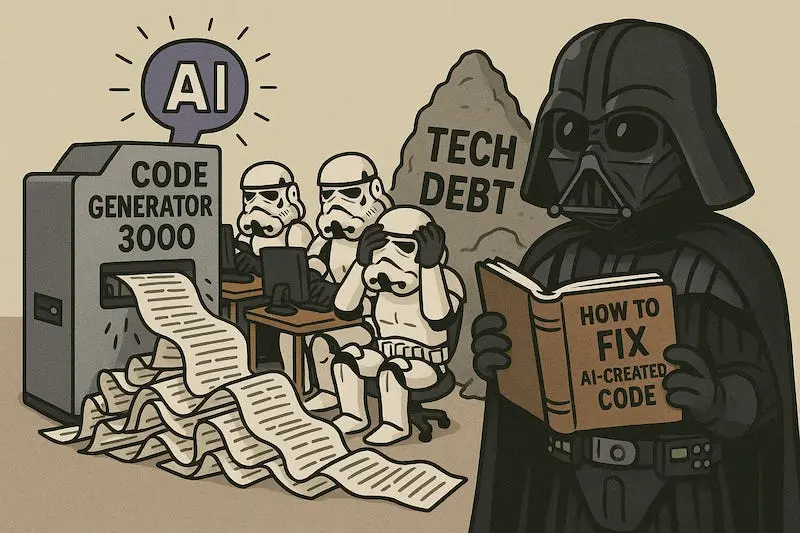
The AI Bubble Is Worse Than Dot-Com Because It's Real
Examining the unsustainable economics behind AI's trillion-dollar valuations and the circular financing fueling the frenzy
The AI industry is experiencing something unprecedented: a bubble where everyone knows it’s a bubble, but nobody can afford to stop playing. Unlike the dot-com era’s speculative fantasies, today’s AI boom is built on genuine technological breakthroughs, which makes the coming reckoning potentially more devastating.
The $100 Billion Circular Financing Scheme
Nvidia’s recent $100 billion investment in OpenAI ↗ reveals the fundamental flaw in AI economics. The chipmaker isn’t just investing in a customer, it’s essentially financing its own revenue. Most of that $100 billion will flow right back to Nvidia through GPU leases, creating what analysts call “circular financing.”
This isn’t just vendor financing, it’s a self-reinforcing loop where Nvidia props up its customers’ ability to buy its products. The arrangement spares OpenAI from massive upfront GPU costs while ensuring Nvidia’s revenue pipeline remains full. But as one analyst noted, this has “a whiff of circular financing and was emblematic of bubble-like behavior.”

When Your Gross Margin Depends on Someone Else’s Roadmap
The core vulnerability in today’s AI ecosystem is what developers call “GPU dependency.” Most AI companies’ gross margins are tied directly to Nvidia’s pricing power. If your pricing lags behind Nvidia’s roadmap, you’re essentially renting your unit economics from Jensen Huang.
This creates a fundamental imbalance. While AI companies chase transformative potential, their cost structures remain hostage to a single supplier. The result? Companies like Stability AI reporting $5 million in revenue while burning $30 million ↗. When your burn rate exceeds revenue by 600%, the music eventually stops.
The Ghost of Dot-Com Infrastructure Overbuild
The parallels to the dot-com era’s infrastructure excess are striking. During the late 1990s, telecom companies laid millions of miles of “dark fiber” that would remain unused for years. Today, we’re seeing a similar pattern with AI data centers.
Meta CEO Mark Zuckerberg announced plans for an AI data center “so large it could cover a significant part of Manhattan.” The Stargate Project aims to develop a $500 billion nationwide network of AI data centers ↗. Yet current utilization rates suggest we might be building capacity years ahead of demand.

The Valuation Reality Check
The numbers tell a sobering story. According to Aventis Advisors’ research ↗, median AI valuation multiples reached 29.7x revenue in 2025. That’s nearly five times the multiple for public SaaS companies. Pre-seed AI startups command median valuations of $3.6 million, while Series C rounds hit $795 million, before generating substantial revenue.
What’s driving these astronomical valuations? The belief that AI will transform everything. But as MIT research found ↗, 95% of AI pilot projects fail to yield meaningful results, despite billions in investment.
The Humane Problem: When Hype Meets Reality
The cautionary tale of Humane’s AI Pin illustrates the gap between AI hype and market reality. The company built enormous excitement around its wearable AI device, only to shut down and sell its assets to HP for $116 million. Customers were left with non-functional devices, demonstrating how fragile AI value propositions can be.
This pattern repeats across the industry. Figure reached a $39 billion valuation before broad commercial deployment. The ambition is incredible, but as developers note, “cash flow gravity always wins.”
The $7 Trillion Infrastructure Bet
Industry research suggests $7 trillion will flow into data centers ↗ over the next five years, primarily driven by AI demand. This massive infrastructure investment assumes that AI adoption will accelerate rapidly enough to justify the spending.
But there’s a disconnect: Microsoft, Meta, Tesla, Amazon, and Google will have invested about $560 billion in AI infrastructure over two years, but have brought in just $35 billion in AI-related revenue combined. That’s a 16:1 investment-to-revenue ratio that would make any traditional CFO nervous.
Why This Bubble Is Different, and More Dangerous
The dot-com bubble burst because companies had no revenue. The AI bubble is more insidious because the technology is genuinely transformative, but the business models remain unproven at scale.
As OpenAI CEO Sam Altman admitted, “Are we in a phase where investors as a whole are overexcited about AI? My opinion is yes. Is AI the most important thing to happen in a very long time? My opinion is also yes.”
This creates a prisoner’s dilemma: Everyone knows valuations are stretched, but nobody can afford to sit out the revolution. The result is what one observer called “the increasingly circular nature of some of the recent investments”, creating systemic risk where one failure could trigger cascading effects.
The Coming Consolidation
The prevailing view among technology professionals is that a correction is inevitable, but it won’t kill AI. Instead, it will wipe out the smaller players while cementing the dominance of well-funded incumbents. The big tech companies, with their massive balance sheets and existing customer relationships, are positioned to absorb the shock.
This isn’t to say AI won’t transform industries. The technology is real and powerful. But the current investment frenzy assumes adoption curves that may not materialize as quickly as expected. When reality sets in, we’ll likely see a brutal consolidation that separates viable businesses from speculative bets.
The question isn’t whether AI will change the world, it will. The question is whether today’s valuations reflect that future accurately, or whether we’re building another generation of “dark fiber” that will take years to find its purpose.




